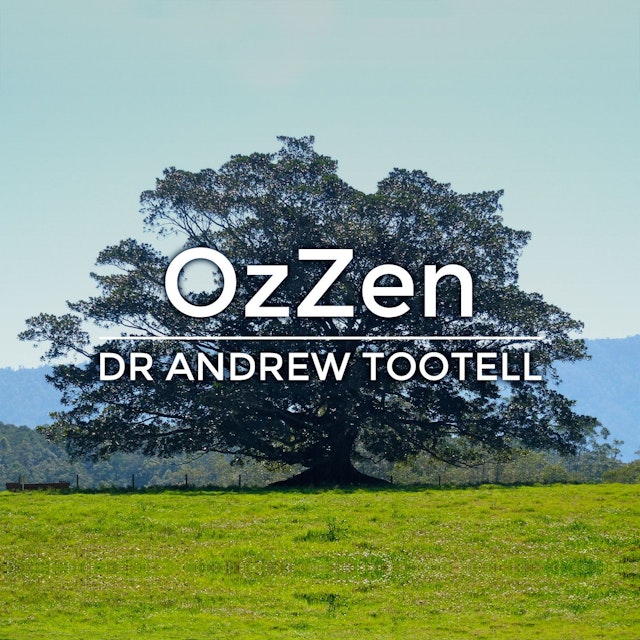This guided meditation OzZen teacher Andrew Tootell continues the project of developing a Zen-informed Guided Meditation practice. It begins by outlining the four principles that all Buddhist groups adhere to: Life is Dukkha (Suffering); Impermanence; Interdependence (no separate self); and Nirvana. Although all Buddhism agree on these “four seals” they interpret them differently. We will be exploring the following question: What makes a zen-informed guided meditation different to other Buddhist-informed guided meditations? Is it a sensibility, an aesthetic? It can be argued that the difference between Japanese (Zen Buddhism) and Indian Buddhism is in how these different cultures relate to this world of impermanence and interdependence - maybe this is the key. Indian Buddhism (or the Buddhism of extinction) seems to reject this world, while Mahayana Buddhism embraces this world.
The meditation itself begins by emphasising the importance of posture and training the wandering mind to focus on an object, which is usually the breath. We then use the metaphor of earth and sky to draw a distinction between calmly abiding on an object and resting in global awareness. The object represents the earth, which can also be a metaphor for form. The sky represents sunyata (emptiness) or boundlessness. The guided meditation then explores what we call open sky meditation – calmly nonabiding in emptiness. The meditation also includes a reading from the Zen teacher Melissa Myozen Blacker and an introduction to the zen metaphor of dharma gates.
The meditation itself begins by emphasising the importance of posture and training the wandering mind to focus on an object, which is usually the breath. We then use the metaphor of earth and sky to draw a distinction between calmly abiding on an object and resting in global awareness. The object represents the earth, which can also be a metaphor for form. The sky represents sunyata (emptiness) or boundlessness. The guided meditation then explores what we call open sky meditation – calmly nonabiding in emptiness. The meditation also includes a reading from the Zen teacher Melissa Myozen Blacker and an introduction to the zen metaphor of dharma gates.
The podcast Andrew Tootell's OzZen Podcast is embedded on this page from an open RSS feed. All files, descriptions, artwork and other metadata from the RSS-feed is the property of the podcast owner and not affiliated with or validated by Podplay.
